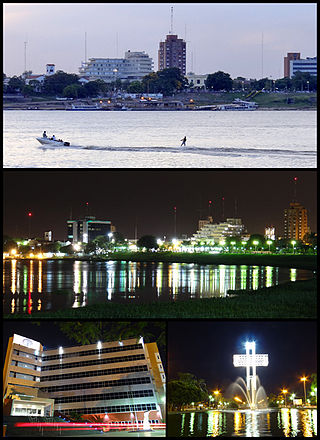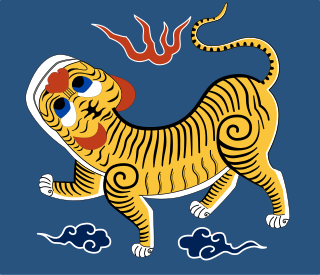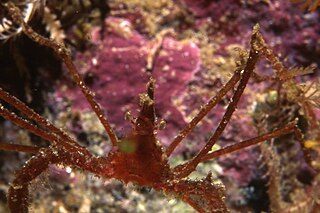
Formosa Province is a province in northeastern Argentina, part of the Gran Chaco Region. Formosa's northeast end touches Asunción, Paraguay, and the province borders the provinces of Chaco and Salta to its south and west, respectively. The capital is Formosa.

Formosa is the capital city of the Argentine province of Formosa, on the banks of the Paraguay River, opposite the Paraguayan town of Alberdi, about 1,200 km (746 mi) north from Buenos Aires, on National Route 11. The city has a population of about 234,000 per the 2010 census [INDEC].

The Republic of Formosa was a short-lived republic that existed on the island of Taiwan in 1895 between the formal cession of Taiwan by the Qing dynasty of China to the Empire of Japan by the Treaty of Shimonoseki and its being taken over by Japanese troops. The Republic lasted 151 days; it was proclaimed on 23 May 1895 and extinguished on 21 October, when the Republican capital Tainan was taken over by the Japanese. Though sometimes claimed as the first East Asian republic to have been proclaimed, it was predated by the Lanfang Republic in Borneo, established in 1777, as well as by the Republic of Ezo in Japan, established in 1869.

Arinos is a municipality in northern Minas Gerais state in Brazil. Arinos is located east of the Federal District on the Urucuia River, a major tributary of the São Francisco. The city is 333 km from Brasília.

Formosa Plastics Corporation is a Taiwanese plastics company based in Taiwan that primarily produces polyvinyl chloride (PVC) resins and other intermediate plastic products. It is the corporation around which influential businessman Wang Yung-ching formed the Formosa Plastics Group, and it remains central to the Group's petrochemical operations. The president of Formosa Plastics Corp. (FPC) is Jason Lin (林健男).

Vila Boa is a municipality in northeastern Goiás state, Brazil.

Formosa Television is a television station based in New Taipei, Taiwan. Established on March 27, 1996, FTV began broadcasting on June 11, 1997.

Formosa International Airport, also known as El Pucú Airport, is an international airport serving Formosa, Argentina, a city on the Paraguay River, which is locally the border between Argentina and Paraguay. The airport is operated by Aeropuertos Argentina 2000.

Nilssonia is a genus of softshell turtles from rivers, streams, ponds, and lakes in South Asia and Burma. In many treatments, it is monotypic, with the single species Burmese peacock softshell. However, the supposed other genus of peacock softshells, Aspideretes, is more closely related to N. formosa than had been believed. They differ only in the neural plates between the first pleural scale pair of the bony carapace, which are fused into one in N. formosa and unfused in the others.

Spanish Formosa was a small colony of the Spanish Empire established in the northern tip of the island now known as Taiwan, then known to Europeans at the time as Formosa or to Spaniards as "Isla Hermosa" from 1626 to 1642. It was ceded to the Dutch Republic during the Eighty Years' War.
Riccardo Formosa is an Italian-born Australian musician and composer. He was the lead guitarist of the pop band Little River Band from 1975 to 1976 and recorded their first two albums, Little River Band and After Hours.

Macropodia is a genus of crabs, belonging to the family Inachidae. It contains the following species:

Macropodia falcifera, the Cape long-legged spider crab, is a species of marine crab found around the South African coast. It is a member of the family Inachidae.

Around 65 species of crab occur in the waters of the British Isles. All are marine, with the exception of the introduced Chinese mitten crab, Eriocheir sinensis, which occurs in fresh and brackish water. They range in size from the deep-water species Paromola cuvieri, which can reach a claw span of 1.2 metres, to the pea crab, which is only 4 mm (0.16 in) wide and lives inside mussel shells.

Macropodia rostrata, common names, the common spider crab, long-legged spider crab, long-legged crab, is a species of marine crab in the family Inachidae. The Macropodia Rostrata visually mimics many other types of small crabs with the exception of its long legs. By attaching algae to their thin legs, they can be confused with the stem of seaweed. This is both a defense mechanism and a predatory advantage, as unsuspecting fish will hide in seaweed beds from nearby predators. This behavior can be absent among larger crabs, and those that live at great depths like giant Japanese spider crabs.

Formosa (1865–1881) was a British Thoroughbred racehorse that was the first winner of the English Fillies Triple Crown in addition to running a dead heat with the colt Moslem for the 2,000 Guineas Stakes. Formosa was bred by James Cookson and was foaled in 1865 at his Neasham Hall stud farm. Formosa was sold to William Graham in 1866 and raced her entire three-year racing career under his ownership. After her racing career ended in 1871, she became a broodmare for Graham until his death in 1876. Formosa was exported to France in 1879 and died there in February 1881. While she did not produce offspring that excelled at racing, her daughters that were exported to Germany and New Zealand did produce descendants that were successful racers.

Joann Formosa, is an Australian Para-equestrian, who won a gold medal at the 2012 London Paralympics.
Macropodia czernjawskii is a species of marine crab in the family Inachidae, found in European waters.
Macropodia tenuirostris, also known as the slender spider crab, is a species of marine crab in the family Inachidae.

The Immediate Geographic Region of Águas Formosas is one of the 7 immediate geographic regions in the Intermediate Geographic Region of Teófilo Otoni, one of the 70 immediate geographic regions in the Brazilian state of Minas Gerais and one of the 509 of Brazil, created by the National Institute of Geography and Statistics (IBGE) in 2017.















